The Apple iPad Pro Review
by Ryan Smith, Joshua Ho & Brandon Chester on January 22, 2016 8:10 AM ESTSmart Keyboard
The other half of what makes the iPad Pro worth talking about is the Smart Keyboard. For those that are unfamiliar with how this keyboard works, in essence it’s really a flip cover that happens to hide a keyboard inside of it. This is yet another thing I mentioned that the iPad really needed to improve its potential as a productivity tool.
I’m going to go ahead and spoil this section by saying that while the Smart Keyboard is worthwhile if you’re typing out more than a paragraph, this feels like one of the clunkier aspects of the iPad Pro.
However, the important question is how I got to that conclusion. Going over the user experience of the keyboard is a pretty simple matter. Attaching the cover to the tablet works the same way it always does, which is accomplished by placing the edge of the cover onto the edge of the tablet which also contains the Smart Connector. There are some strong magnets that help with alignment here, and provide the positive pressure needed to ensure that the data and power pins of the Smart Connector are firmly connected to the keyboard.
Once the cover is connected, setting up the keyboard is done by folding it out and doing some origami until the tablet is docked into the right place on the keyboard, which has a noticeable notch to it. Aligning this despite the strong magnets does take some work, as it seems that unless the cover is setup correctly the keyboard isn’t enabled at all.
If you’re trying for precision, I would say that there’s roughly a 4-5 second time delay from the moment that you decide that you need to use the keyboard to actually using it. In addition to this time delay, the keyboard is rather precarious and is basically only stable when you’re using it on a table. While gravity can keep the whole setup somewhat stable on your lap when the display is leaning backwards, if the display starts leaning forwards there’s really nothing stopping it from collapsing and detaching from the cover, as while the magnets are strong enough to hold the tablet in a static state, they aren’t strong enough to hold the tablet if there’s the additional force of decelerating the tablet as it falls. As a result, the angles that the keyboard and tablet can hold relative to each other is fixed.
To be fair, once the keyboard is set up and it’s in a stable position, typing on the tablet is a great experience. The Surface Pro 3 was decent in my experience, but the touchpad with its lack of strong palm rejection made for some frustrating experiences. In this respect, the iPad Pro does a lot better, to the extent that I didn’t have any trouble doing things like typing up long forum posts or various sections of this review. Key travel is short, but there’s good haptic feedback and the layout of the keyboard doesn’t have any strange issues that seem to happen so often to so many tablet keyboards. Something like the Pixel C just doesn’t even compare here, especially because due to the use of Bluetooth it’s absolutely useless in an apartment or any remotely dense environment where the 2.4 GHz spectrum is crowded to the point that it approaches being unusable.
However, despite this significant setup time for the keyboard cover, pretty much the only value for the keyboard cover is text input. Due to the ergonomics of a near-vertical touch screen it’s really not something that can be used for extended periods of time as once you’re done with text input to comfortably use the touch screen you really need to break down the keyboard and revert it back to a simple tablet.
I’ve spent a lot of time thinking about the conundrum of the keyboard when it comes to these tablets, and honestly I don’t think anyone has figured out the right way of doing things yet. I think the Pixel C in form is a step in the right direction, but the execution is unfortunate to say the least. The iPad Pro touchscreen keyboard has the size to allow for touch typing, but the utter lack of position feedback makes it difficult to know where to keep your hands and because touching the display means inputting a character it’s necessary to awkwardly keep your hands right above the glass of the display. The heart of the issue here is that it’s necessary to have an input method where it’s easy to keep your fingers resting on the home row of the keyboard, with clear haptic feedback for input and some indication of where the keys are. It’s also necessary to make sure that this keyboard is easily accessible when it’s needed but quickly stowed away when it isn’t.
I can’t help but wonder whether the better solution here would be something like Lenovo’s Yoga Pro design, but with a different method of execution. Instead of making the two halves a single unit, the keyboard portion should be easily and quickly detached with the smart connector held within the hinge. Rather than a traditional laptop keyboard, something more like the current Smart Keyboard would make a lot of sense. However, I suspect that in doing this a traditional flip cover would no longer make sense as the keyboard would really become an integral part of the user experience once properly integrated. We can talk about how touch-only is a faster and more convenient experience, but this really only applies to navigation as while I can type at about 40 words per minute without issue on a phone or tablet trying to reach 100 words per minute is hard to say the least.
Overall, I should make it clear that the iPad Pro’s Smart Keyboard is not a bad keyboard by any means. When I’m able to just focus on typing, the user experience far exceeds pretty much anything else I’ve tried in the industry. The problem is that as the Smart Keyboard starts to approach the point where I can actually use it, I start to really notice all of the flaws that the implementation has. In this case, the two major issues that really need to be solved here are speed to deploy/stow and lap stability. While a lot has been made of the iPad Pro’s inability to have adjustable viewing angles realistically it only needs two viewing angles, similar to how the Smart Cover only has two viewing angles. If the Smart Keyboard can feel like it appears and disappears almost instantly and can be used without a table effectively, it would probably be the ideal solution to the keyboard problem that tablets face.


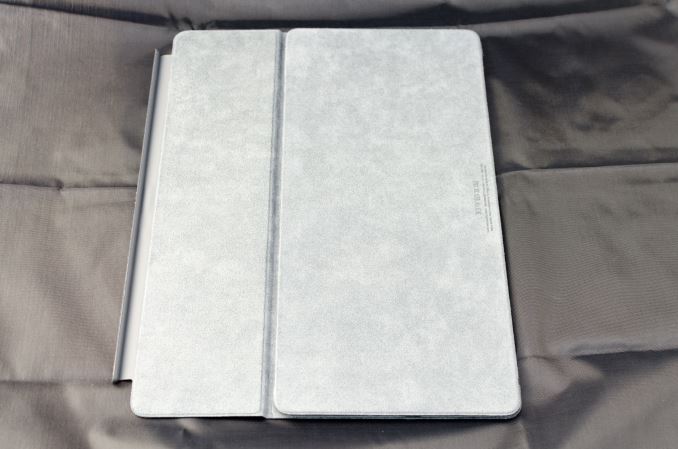
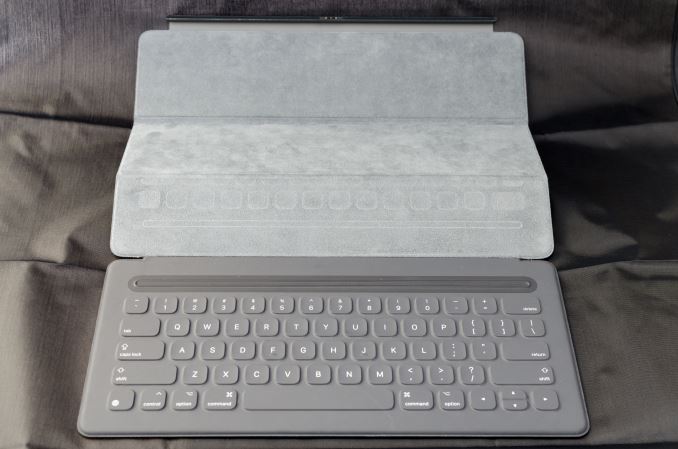
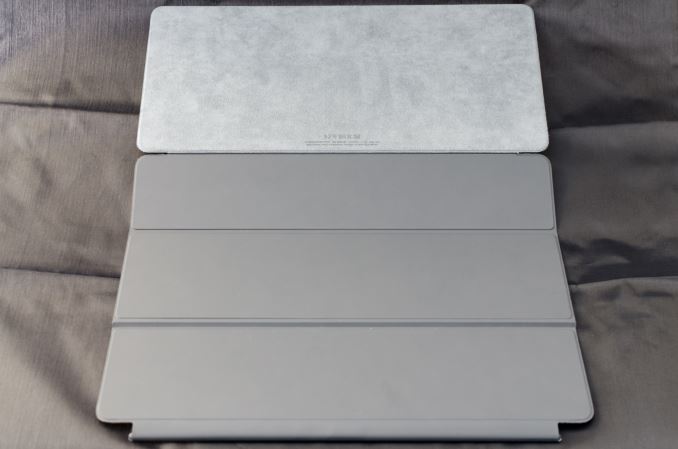
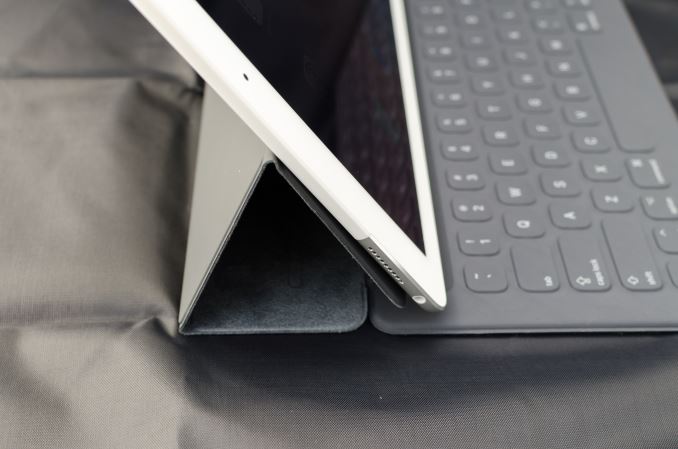
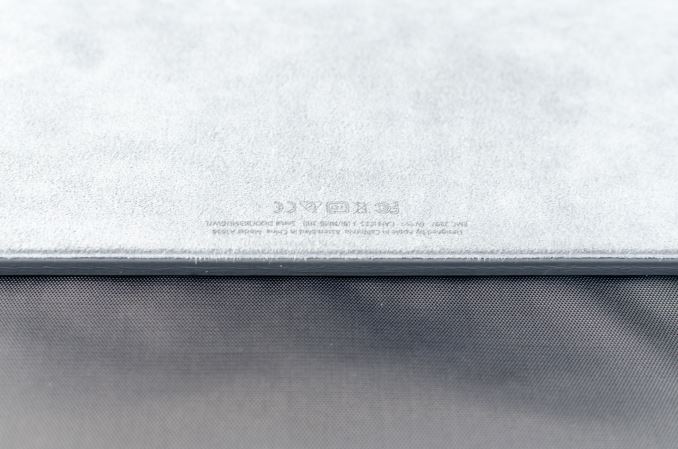








408 Comments
View All Comments
Relic74 - Saturday, February 27, 2016 - link
Citrix support isn't very good on the iPad Pro, we have one on the office as a test bed. We've gone with ChromeBooks instead, a little cheaper, though not by much as we bought the Dell 13" ChromeBooks which are about 600 bucks. Works fantastic as a terminal machine. The iPad Pro is just to expensive for such a thing and it doesn't support a mouse, plus external display support absolutely sucks. Their was black bars, resolution looked bad, doesn't support extending the desktop (an absolute must have feature) and the DPI is so large it looks like a children's OS. Though are biggest complaints was the lack of multi-user support, horrible file management, no Open ID support and can't run apps in the background. The iPad Pro just isn't an Enterprise computer. They might use them as data entry and retrieval devices but as an Office computer, nope.name99 - Friday, January 22, 2016 - link
Your comment, like the use of the term "Productivity software", reveals the sort of white collar snobbery that is rampant in supposedly classless America.I agree that an iPad (and for that matter a Surface) are highly sub-optimal devices for the tasks of large amounts of writing, research, constructing spreadsheets, debugging code, etc.
But those are not the only jobs in the world. Musicians are also professionals (in the colloquial, if not the legal) sense, as are designers/drawers/artists, as are those using these sorts of tablet devices to hold large numbers of technical papers [my particular use case] (ie scientists/researchers), or blueprints or CAD/CAM material or medical diagrams.
To claim that those people are not doing "real" jobs, or that they don't "deserve" or "need" a device optimized to their usage models (which are much heavier on finger or pencil/stylus/brush style manipulation, much lighter on keyboard manipulation) is basically one more version of the usual "look at me, I'm the most important person in the world, and only my needs matter".
Constructor - Saturday, January 23, 2016 - link
Perfectly said!MaxIT - Saturday, February 13, 2016 - link
Absolutely correct! To some people on this (and similar) forum if you aren't doing Photoshopping, 3D modeling , CAD or extensive data querying you don't deserve the term "Pro".I know of people making a lot of real money, real big money, using just a notepad and a word processor. Or a sketch device.
In my organization we are managing $36 millions gear with an outdated iPad 4 and PROFESSIONAL APPS (the same apps someone here keep saying it doesn't exist). But we don't deserve the term "pro", do we ?
Wagobert - Saturday, January 23, 2016 - link
regarding software, I have to agree with Ddriver. On the "SOC Analysis: CPU Performance" page, the authors used Apple XCode (running presumably on a Mac). Could Apple's own XCode run on this hardware? This is being discussed on multiple sites, and the consensus seems to be that memory and IOS are the problem - see here, for example: https://www.quora.com/Will-Apple-make-an-iPad-Pro-...Constructor - Saturday, January 23, 2016 - link
Sure it could. The performance is definitely there. Replicating the entire UI would just be a pretty big task, and larger screens are usually a big advantage in coding and debugging.There's also the matter that Apple is reluctant to allow binaray code generation directly on the device because it could be abused for attacks (because the code signing key would have to be on the device and might be exploitable through other vulnerabilities).
MaxIT - Saturday, February 13, 2016 - link
Maybe in the future, but not yet. To do some serious developing you need multiple windows, a good workspace and maybe some virtual machines... That means a big screen, a lot of ram and a different UI.Relic74 - Saturday, February 27, 2016 - link
It can but Apple won't release it for this, it's not a laptop.zeeBomb - Saturday, January 23, 2016 - link
Well I'm lateakdj - Monday, January 25, 2016 - link
Apparently you're oblivious to the amount of resources, time money and man hours being devoted specifically to the development of mobile, companion apps from the likes of MS, Adobe and AutoDesk.None want to be left in the rear view mirror!
Also, to whoever was beating up on the 2 dozen MS apps, there's a 'Glass' app used specifically for Office suite, scanning and the like. Maybe even 'Office Glass' --- but v1 of the suite's 'drop' a year ago ---or has it been two now? Doesn't Matter, I was on board day one and have had nothing but luck and reliability with it. Both on iOS and OS X. Adobe's companion apps JUST underwent ground up re-writes to support 64bit, handoff amnd it's continuity with a home, studio, desk or one's 'main production' --- not necessarily "pro" rig, but possibly the machine with peripheral options, storage, more power with. 110v constantly, etc. I received mine November 6th, ordered around a week, maybe two post-launch. I've owned every iPad and deploy them now and since iPad 4 'in the field' for my business our family's run for three generations. As well as a dozen full and two dozen part time & temp employees, plenty of us pay our mortgages, car payment(s), daycare and taxes using the iPad as our primary, if not 'only' computer while 'making paper' (we own/operate a flight service and mobile A/V production company in Alaska - I've been flying myself nearly thirty years --- & the ½ pound replacement (Mini 4) or 1.5 pound long trip replacement, iPP is an incredible relief from my 45-60 pound flight bag. Faster, more reliable and up to date than anything 'printed' as well --- its ability to file my flight plan, calculate fuel, diversions for safety, real time traffic, weather, or airport 'issues'. Jeep charts, plates 'no fly areas' maybe -- or any diversion from routine T/O or landing cycle knowledge is paramount & the more details, the better when you're flying in & outta the same areas son long
In the air, test/beta versions of NextGen (ADSB's successor and the update to America, if not the world's ATC system --- with 3D display or HUD showing traffic, terrain, and their headings, altitude and speeds - as well, and most importantly where they're going to, whether their path crosses mine @ a certain moment in the future ...& with the info, both (if equipped) planes will be instructed to change heading, decrease/increase speed or altitude. TCAS (collision avoidance) and 'always on' transponders w/GPS & better tracking then radar and the many blind spots on the planet to radar --- as travel increases, your idea of professional should be changing - as these guys are faster than anything we used on our desks in 2010, just six years ago. Solid state, blazing fast storage, always on and always fast LTE connectivity, wifi if you're in range. The horsepower (I've yet to notice frame drops other than in the App Store as its repopulating during an extensive swatch and I'm deep down) to run most anything developers can dream up now and will continue better their apps, integration and aggregation with the 'mainframe' of the business ...whether you're an engineer, architect, car salesman or waitress. Teachers, UPS & FedEx'll update their tabs so,easy and the garbage men can get rid of pen and pencil as well as the monstrous waste of paper generated daily to be thrown straight into the trash.
iPad Pro, the Surface Pro --- they're 'words' but my definition of professional is the ability to help me make money. A tool, usually an invaluable one that's evolved enough in the capacity I need it for to be considered Revolutionary
That's 2010, 2012 the original and the Retina display 'then 2015, with iPP.
I'm with the author(s). I've owned and LOVE Pencil, don't need or want the KB cover after using it for a week. At all
9one thing on the UI side of the equation is the very excellent OS X like software keyboard layout, the Pencil as a helper for typing and picking suggested/predicted words above the keyboard I've found. And with common punctuation including 'shift' 5 for the % -- shift keys on both sides, double shifting does rage cap lock thing and we've got tab/delete, larger emoji key w/numeric and keyboard switcher in both sides of the space bar. The clipboard, undo and redo are awesome as are the 'up down' form filler/maneuver buttons on the right top of the KB UI. Well enough laid out, I've found a very comfortable case in the lap, perfect angle typing with my left thumb and right hand using/holding the pencil as my second hand. Worlds a treat, hard to explain correctly but efficient, effective and my near new 15" 2015 rMBP has been lonely since Thanksgiving (I'm floored by what Adobe's accomplished with their creative cloud, my iPad Air 2 or Pro mad their aggregation with OS X on my iMac, the Mac Pro. Or earlier mentioned MacBook. They're ALL Over It! The software companies are done boxing DVDs up with 300 page instruction manuals and the packaging costs. Get used to it. Lap/desktops aren't going anywhere but iPads can certainly be the tool of choice, primary tool to get their job done, inventory counted or their record produced!
Pro football today had a bunch of problems on the sidelines today with their Surface Pros, had to 'turn em off' for a few. Both teams ...til they 'rebooted the system' lol
iPads man. They're for pros that want to look, sound and be prepared professionally with reliability and extensive functionality, support and longevity. 'Imstiimown kids still use and it's still working great, the original iPad. Also have the Xoom, predecessor to Nexus. Doesn't 'light up'. It's. Broked.